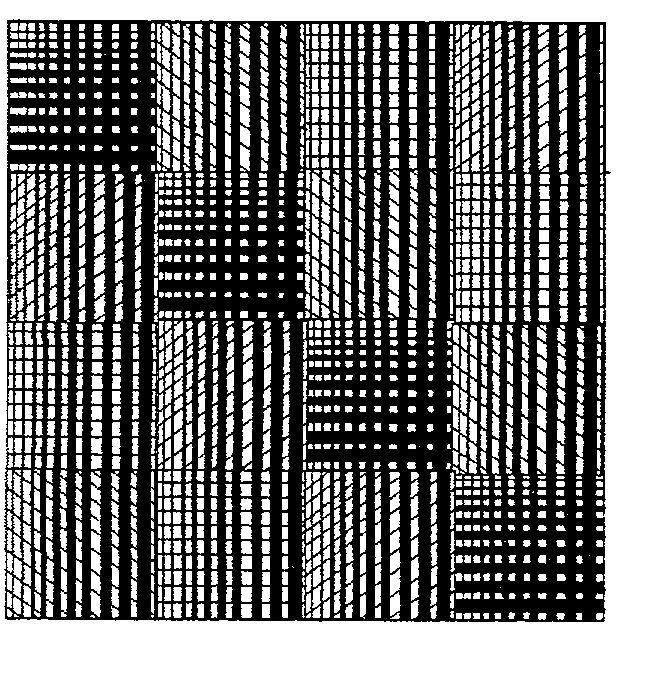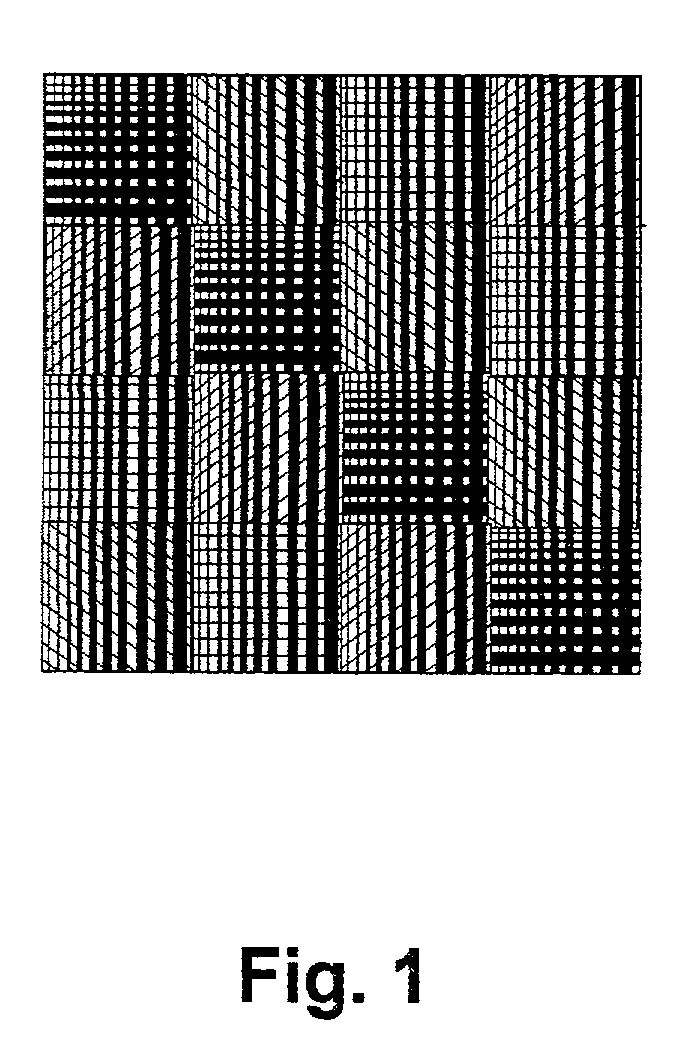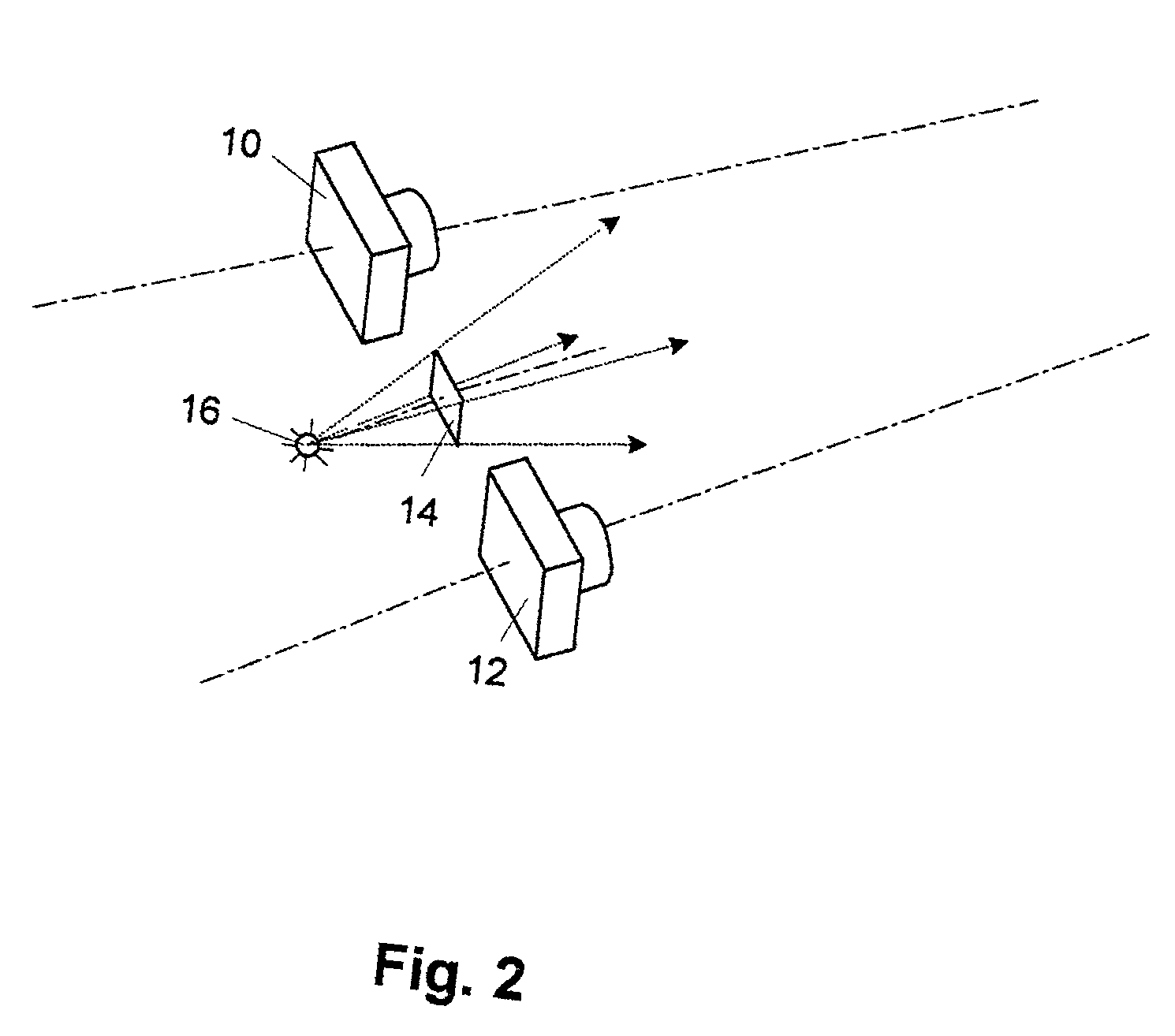Imaging-based distance measurement and three-dimensional profiling system
a technology of three-dimensional profiling and distance measurement, applied in the field of image-based distance measurement and three-dimensional profiling system, can solve the problems of ambiguity in matching the reflected line pattern with the illuminated pattern, long time, and heavy computational need for shape characteristics identification
- Summary
- Abstract
- Description
- Claims
- Application Information
AI Technical Summary
Problems solved by technology
Method used
Image
Examples
Embodiment Construction
[0046] A preferred embodiment of the imaging-based distance measurement and three-dimensional profiling system of the present invention is illustrated in FIG. 2. The system uses two cameras 10, 12, an illumination source 16, and a pattern mask 14 through which the illumination is projected.
[0047] The first camera 10 and the second camera 12 are positioned at predetermined and different view points, both facing toward the objects to be imaged. Thus, the positional relationship of the two cameras 10, 12 are known. The two cameras have a predetermined distance between them and each camera has a predetermined viewing angle relative to that of the other camera. This arrangement allows images of two different view points of the objects to be acquired by these cameras. A projection unit that consists of the source of illumination 16 and a two-dimensional pattern mask 14 is positioned in the vicinity of the cameras. The pattern mask 14 faces in the general direction toward the objects for w...
PUM
 Login to View More
Login to View More Abstract
Description
Claims
Application Information
 Login to View More
Login to View More - R&D
- Intellectual Property
- Life Sciences
- Materials
- Tech Scout
- Unparalleled Data Quality
- Higher Quality Content
- 60% Fewer Hallucinations
Browse by: Latest US Patents, China's latest patents, Technical Efficacy Thesaurus, Application Domain, Technology Topic, Popular Technical Reports.
© 2025 PatSnap. All rights reserved.Legal|Privacy policy|Modern Slavery Act Transparency Statement|Sitemap|About US| Contact US: help@patsnap.com



